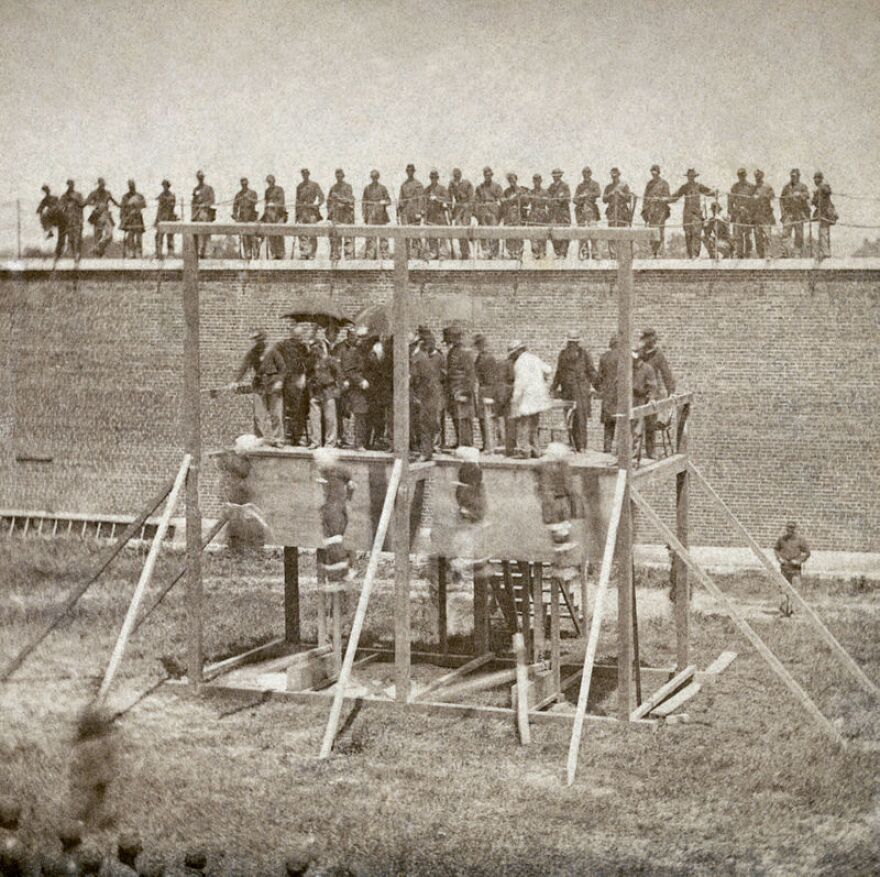
From Nathan Hale to John Brown to lynchings to executions of accused witches, the hangman's noose has played a grim role in American history.
While its usage has declined and changed over time, just in the past week, articles have surfaced about a political flier using a noose as the background that was circulated in a church parking lot in South Carolina, and nooses hanging in rival high schools in California. A police officer in the latter article, Sgt. Martin Acosta, stated, "A noose in itself is not making any correlation to anything." Is that true? Isn't a noose in 2014 an explicit evocation of lynching?
What's our relationship to the rope, to the gallows? This hour, we explore what the noose says about our society culturally, anthropologically, psychologically, and spiritually in Connecticut and beyond.
What do you think? Comment below, email Colin@wnpr.org, or tweet @wnprcolin.
GUESTS:
- Jack Shuler is the author of The Thirteenth Turn: A History of the Noose
- Professor Lawrence Goodheart is a professor of history at the University of Connecticut, and the author of many books, including The Solemn Sentence of Death: Capital Punishment in Connecticut
MUSIC:
- "Strange Fruit" by Billie Holiday
- "Gallows" by Brown Bird
- "The Hanging" by Grant Peeples & Eliza Gilkyson







